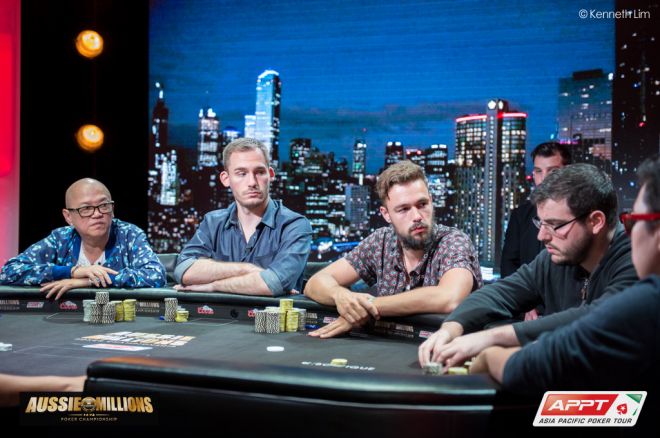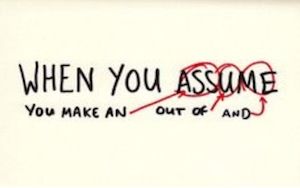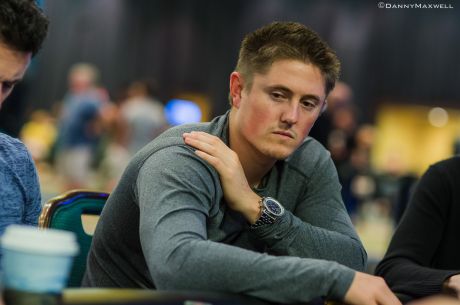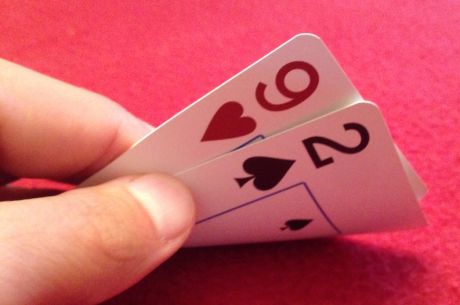Thinking Poker: Making an Ass Out of You and Me

Most of my poker instruction is exploitive in nature. That is, it deals with how to predict the mistakes an opponent is likely to make and then adapt your own play to take maximum advantage of those mistakes. Whether they realize it or not, this is the approach of most poker players to the game, and it’s great when it works. It’s important to know the limitations of this approach, though, so that you can apply it more intelligently and deliberately.
A typical line of thinking for me is to put my opponent on a range of hands based on his actions so far and how I expect him to think, then look at how my own hand stacks up against that range. If I think I’m well ahead of his range, I’ll try to predict how large of a bet he’s likely to call and then bet that amount.
If I think I’m unlikely to have the best hand, I’ll conduct a similar analysis. That is, I’ll try to predict how much it will take to make him fold, and then I’ll bet that amount.
Notice how many assumptions are involved here. Not only do I have to make assumptions in order to put my opponent on a range in the first place, I then have to make even more assumptions about how he’s likely to proceed with all of the individual hands in that range.
Even many serious players think that this is all there is to poker. Through some combination of experience and imitation, they learn a particular strategy that works reasonably well against the players they encounter frequently, and then they conclude that this is what “correct” poker looks like. Often, these players are unaware of the fact that this default strategy works only against a certain type of player and will in fact lose money against other types of players.
Of course, very tough opponents are the ones most likely to subvert your default strategy, but even against weak and relatively predictable opponents, there’s a lot of uncertainty involved. This is why I think it’s important for any serious player to understand the fundamental mathematics that underlie the game. These include simple rules like:
- Strong hands should rarely be checked and even more rarely be folded.
- Some weak hands should be played similarly to strong hands to avoid giving away information about your holding.
- When facing a small bet, call or raise a lot more often than you fold.
There are more, but you get the idea. You can and often should deviate from these rules in order to take advantage of weak players, but given the uncertainty involved, you should be aware of approximately how much you stand to lose if your assumptions are not accurate.
For example, passing up a thin value bet because you think your opponent folds too much on the river is only a small mistake if your read is wrong. After all, a thin value bet might succeed only 10% more often than is necessary to show a profit, in which case incorrectly checking with such a hand costs you only 10% of the bet you would have made.
Meanwhile folding a strong hand to a small bet because you’re “sure he has it” has the potential to be a very costly mistake. If it turns out you are wrong and your opponent would often bluff in this way (which he probably should if you are going to fold a strong hand!) or even value bet a weaker hand, then your attempt to exploit him has resulted in you getting exploited to the tune of a large percentage of the pot.
I recently played a hand that provides an example of what I’m talking about. I was first to act before the flop in a $5/$10/$20 game and raised to $70 with AxKx-offsuit. The cutoff (CO), big blind (BB), and straddle all called.
The flop came AxQx3x rainbow. It was a good flop for me, of course, but there are only so many second-best hands that can give action to an under-the-gun raiser on this board. I checked, as did everyone else.
The turn brought another 3x and a possible flush draw. The BB checked, and the straddle bet $200. I just called, for many of the same reasons that I didn’t bet the flop. I’d be happy to call again on the river or to bet if checked to, but I didn’t want to put more than two bets into the pot.
It wasn’t entirely up to me, though, as the CO now surprised me with a raise to $625. The BB and straddle folded, and I had a decision. My hand was strong and, arguably, underrepresented. However, most brick-and-mortar players are overly passive, and this particular player seemed like no exception.
My usual assumption is that people might raise with very strong hands or with bluffs, but not with anything in between. I also don’t expect to see a bluff-raise into two people on the turn from a player who could have bluffed much more cheaply and easily by just betting the flop. In other words, I didn’t think he was bluffing, and I didn’t think he would think he could raise for value with a worse hand than mine.

The problem was that I was getting nearly 3-to-1 with a strong hand that blocked several of the hands that most worried me, such as Ax3x, AxQx, and AxAx. If any of my assumptions were wrong, a fold would be a big mistake. I called.
The river was an offsuit 9x. I checked, and he bet $700. I had the same dilemma as on the turn, and now I was getting 4-to-1. I reluctantly called, “sure” that I was beat. My opponent looked dejected and turned over Ax7x. I showed my hand and collected the pot.
I don’t know what he was thinking. Probably he wasn’t. Sometimes — more often than you’d think — people just play strangely, which is why you have to allow room for error when you make assumptions.
The problem with playing solely by feel or instinct or experience is that can be hard to “feel” the difference between being beat 75% of the time and being beat 85% of the time, and in my case that was the difference between a call and a fold.
Be sure to listen to Andrew and Nate Meyvis on the Thinking Poker podcast, and for strategy articles, reviews, and more from Andrew, check out the rest of The Thinking Poker website.
Get all the latest PokerNews updates on your social media outlets. Follow us on Twitter and find us on both Facebook and Google+!








